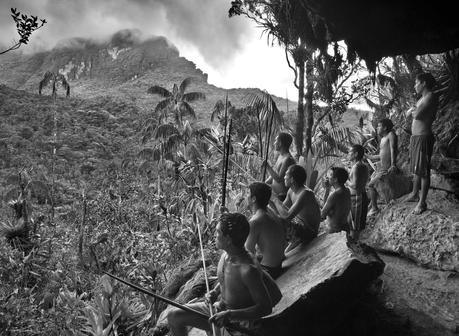
The Yanomami of the Amazon Basin in Brazil (Sebastião Salgado/Amazonas)
In the mid-1970s, with Brazil’s military regime eager to develop the Amazon Basin, a northern section of the trans-Amazonian highway reached into Yanomami territory, introducing influenza, measles and malaria and resulting in thousands of deaths.Maturacá, in contrast, was engulfed in a gold rush in the late 1980s which attracted over 35,000 freelance gold-diggers to traditional Yanomami lands, not only bringing new diseases but also using violence against Indians and poisoning their rivers with the mercury they used to separate gold from mud. Once more, uncounted thousands of Indians died.
Today, a new bill pending before Brazil’s Chamber of Deputies would proclaim a “public interest” in allowing Indian reserves to be used for farming, mining, oil and gas pipelines, hydroelectric dams, human settlements and military operations. The bill, already approved by the Senate.
Excerpted from an article in the Washington Post produced by Brian Gross and Shelly Tan.
Facts about the Threats to Rainforests, Indigenous People and Species
- Rainforests are threatened by unsustainable agricultural, ranching, mining and logging practices.
- Before 1500 A.D., there were approximately 6 million indigenous people living in the Brazilian Amazon. But as the forests disappeared, so too did the people. In the early 1900s, there were less than 250,000 indigenous people living in the Amazon.
- Originally, 6 million square miles of tropical rainforest existed worldwide. But as a result of deforestation, only 2.4 million square miles remain.
- At the current rate of tropical forest loss, 5–10 percent of tropical rainforest species will be lost per decade.
- Nearly 90 percent of the 1.2 billion people living in extreme poverty worldwide depend on forests for their livelihoods.
- Fifty-seven percent of the world's forests, including most tropical forests, are located in developing countries.
- Between 2000 and 2012, 2.3 million square kilometers of forests around the world were cut down. That's roughly the size of all of the states in the U.S. east of the Mississippi River.

